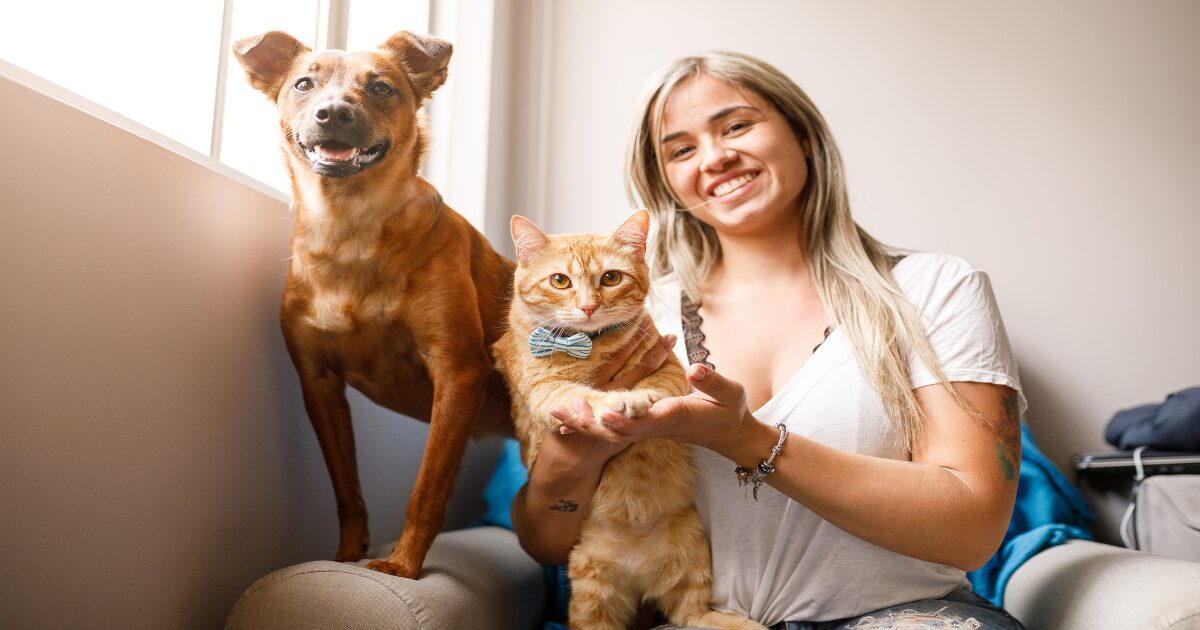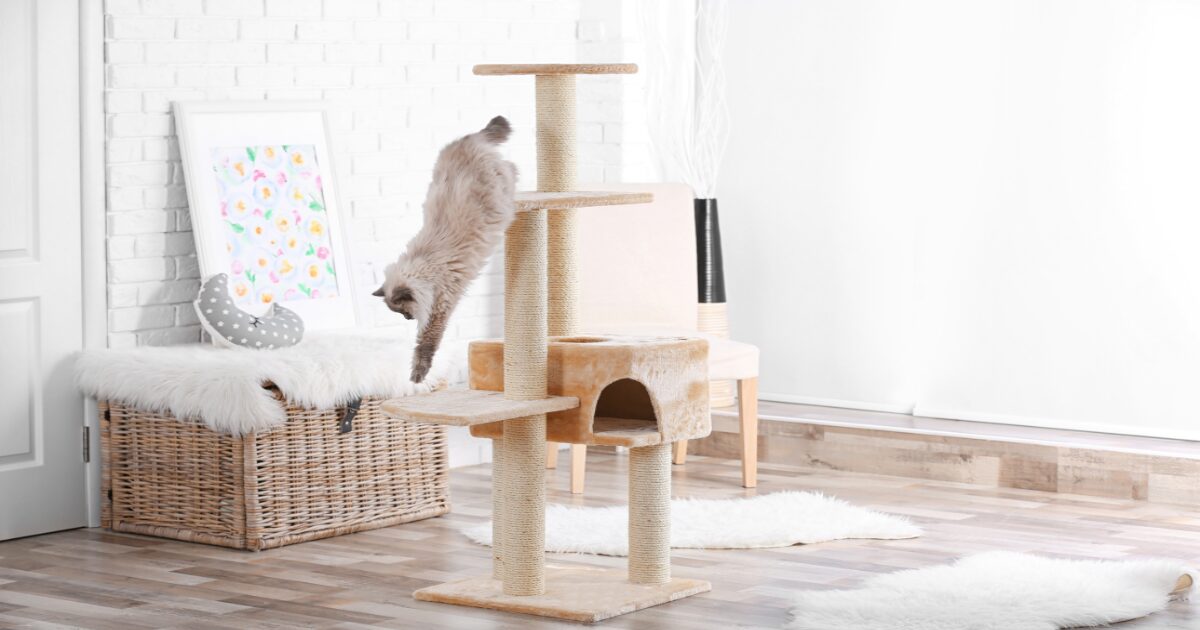Introducing a New Pet to Your Home

Bringing a new pet into your home is a thrilling experience that can bring so much joy and love into your life. Whether you’re welcoming a playful puppy, an adorable kitten, a calm senior dog, or even a feisty rescue pet, the process of introducing them to their new home is both exciting and important. However, as joyful as it is, it can also come with its fair share of stress—not only for you but also for your new pet. The transition into a new environment can be overwhelming, and without the proper guidance, the adjustment period can sometimes feel like a long road.
But here’s the good news: Introducing a new pet to your home doesn’t have to be stressful! With the right preparation, patience, and understanding, you can set your new pet up for success and help them feel comfortable in their new surroundings from day one. The key is making sure they feel safe, loved, and welcomed into their new environment. Whether this is your first pet or you’ve had multiple pets before, following a structured, stress-free approach will make all the difference in ensuring that both you and your new furry (or scaly) friend enjoy this exciting new chapter together.
In this guide, we’ll walk you through 7 simple steps for introducing your new pet to your home. From preparing your space to establishing a solid routine and introducing them to any existing pets, we’ll provide you with the essential tips to make the entire process as smooth and enjoyable as possible. Ready to begin? Let’s dive into the steps that will help you create the perfect environment for your new pet!
1. Preparing Your Home for Introducing a New Pet to Your Home

When it comes to introducing a new pet to your home, preparation is everything. Before your new pet arrives, you need to create a space where they can feel safe, relaxed, and secure. Whether you’re adopting a dog, cat, rabbit, or another type of pet, ensuring that your home is ready is crucial for their adjustment.
Start by creating a designated area where your new pet can initially settle in. If you’re bringing home a dog, a crate or a quiet room with soft bedding can be an ideal space. Cats, on the other hand, may benefit from a private room with access to their litter box, food, and water bowls. This space will give them the chance to adjust to their new surroundings without feeling overwhelmed by the busy household.
Next, make sure that the area is pet-proofed. Just like you would baby-proof your home for a toddler, ensure that your home is safe for your new pet. Remove any hazardous items that they might be tempted to chew or get into—small objects, cleaning supplies, electrical cords, and plants that may be toxic to pets should all be out of reach. If you’re introducing a puppy, kitten, or any young pet, it’s essential to keep the environment as safe and free from distractions as possible.
Set up your pet’s essentials in the designated space. If you’re introducing a dog to your home, ensure there are comfortable spots for them to rest, along with their food and water bowls placed in a quiet, easily accessible area. For a cat, keep the litter box clean and ensure it’s in a quiet corner to maintain privacy. These basics will help your new pet feel comfortable and allow them to settle in without feeling overwhelmed by the new environment.
It’s also important to mentally prepare yourself and your family members for the changes. If you have other pets, prepare them for the introduction as well. Keeping your new pet’s arrival a secret for everyone except for the immediate household can minimize chaos and allow for a calmer, more controlled introduction. Setting boundaries for children and other pets about respecting the new pet’s space will ensure that your new pet has the best chance of adjusting without stress.
2. How to Introduce a New Pet to Your Home: Creating a Safe and Welcoming Space

Once you’ve set up your home for a successful introduction, it’s time to think about how to make the environment feel truly welcoming for your new pet. Creating a safe and welcoming space goes beyond the physical setup—it involves making sure your new pet feels emotionally secure and comfortable in their new surroundings.
When introducing a new pet to your home, it’s essential to allow them time to adjust without overwhelming them. If you’re adopting a dog, they might need time to decompress after a long car ride or after meeting you for the first time. Let them explore their designated space at their own pace. It’s also important to be gentle and calm, as your new pet can sense your emotions. Be sure not to crowd them with too much attention right away.
For cats, give them plenty of time to hide or relax in a quiet space. Cats, especially rescue cats or shy ones, often prefer to observe their new environment from a safe vantage point before venturing out. A cozy bed or blanket can help them feel more comfortable. Over time, let them come out when they’re ready, and slowly introduce them to other areas of the home, making the experience as stress-free as possible.
While you’re introducing a new pet to your home, try to keep your own energy levels calm and relaxed. Pets are very sensitive to human emotions, so it’s essential to be mindful of how you approach them during these first moments. Avoid loud noises, sudden movements, or high-energy interactions that could cause your pet to feel fearful or anxious.
As you start to integrate your new pet into the home, reward positive behavior and interactions with praise, treats, or a favorite toy. This will help them associate their new home with positive experiences and make them feel safe and loved. Be patient—don’t rush the process. This is a delicate time for your pet, and giving them space to feel comfortable is key to their emotional well-being.
3. The First Encounter: Tips for Introducing Your New Pet to Their New Home

The first encounter between your new pet and their new home is an incredibly important moment. Whether you’re bringing home a dog, a cat, or any other type of pet, this first meeting can set the tone for the rest of your pet’s time with you. It’s critical to keep things slow and controlled to avoid overwhelming them.
When you first introduce your new pet to their new home, make sure that the environment is calm. For dogs, it’s a good idea to keep them on a leash during the first encounter so you can control their movements and ensure they’re not becoming too excited or stressed. For cats, let them explore their new surroundings at their own pace, especially if they’re nervous. It’s okay if they choose to hide for a while—this is normal behavior as they get used to the new environment.
At this stage, avoid bombarding your new pet with too many people or pets. If you have children or other animals, it’s best to limit the introduction to one-on-one interactions in the beginning. Gradually introduce your new pet to other family members and existing pets once they’ve settled in and become more comfortable in their environment.
When introducing a new pet to their new home, make sure to be gentle, calm, and encouraging. Use soothing tones and avoid rushing the process. Let your new pet explore, but never force them to interact if they’re not ready. It’s essential to let them set the pace. Positive reinforcement through treats and affection is an effective way to build trust and encourage them to feel comfortable in their new home.
4. Establishing a Routine: How to Make Your New Pet Feel Right at Home

One of the most important ways to make your new pet feel at home is by establishing a routine. Pets, especially dogs and cats, thrive on structure. A consistent schedule for meals, playtime, walks, and potty breaks will help your new pet feel secure and reduce anxiety.
Start by setting up a regular feeding schedule for your new pet. Make sure they’re fed at the same times each day, which will help them understand the rhythm of their new home. If you’re introducing a new dog, ensure you’re providing the right type of food and portion sizes for their breed, age, and size. Cats also appreciate routine feeding times, so ensure their bowl is replenished regularly.
When you bring a new dog into your home, walking them at consistent times will help them adjust to the rhythm of your day and feel more secure. Dogs need regular exercise, so establishing a walking routine can help them burn off excess energy and reduce stress. If you’re introducing a puppy, crate training can be part of their routine to help with housebreaking and bedtime.
For cats, make sure their litter box is clean and placed in an easily accessible spot. Cats are often very particular about their litter boxes, so maintaining a clean and consistent environment for them will help keep them happy. Establishing a bedtime routine for your new pet can also signal that it’s time to wind down and rest.
A regular routine not only helps your new pet feel more comfortable but also strengthens your bond. Over time, your pet will learn what to expect each day, which will reduce any initial confusion or anxiety about their new environment. Routine also helps with training, as it sets clear boundaries and expectations from the start.
5. Introducing a New Pet to Your Home and Existing Pets: The Secret to a Peaceful Coexistence

If you already have pets in your home, introducing a new pet can be a delicate process. Proper introductions between your new pet and your existing pets are crucial to ensuring peaceful coexistence. It’s important to take things slow and monitor their behavior during the early stages.
When introducing a new dog to your existing dog(s), keep both pets on a leash during the first meeting to control their movements. Allow them to sniff each other and get to know one another, but don’t force interactions. If you’re introducing a new cat to a dog, keep the cat in a separate room initially
and allow them to observe one another from a distance. Gradually allow them to meet once they’ve had a chance to adjust.
Always supervise the interactions between your new pet and existing pets. It’s normal for animals to establish boundaries, so some hissing, growling, or barking might occur. Be patient and calm—use positive reinforcement to reward peaceful behavior and discourage aggressive interactions. If either pet shows signs of aggression or fear, take a break and give them time to calm down before trying again.
It’s essential to give your existing pets plenty of attention during this time so they don’t feel neglected or threatened by the new arrival. Establishing separate spaces for each pet and giving them both quality one-on-one time will help prevent jealousy or territorial behavior. Over time, your pets will begin to adjust to each other, and peace will reign in your home.
6. Signs Your New Pet Is Adjusting: How to Know When They’ve Settled In

As your new pet adjusts to their new home, it’s essential to keep an eye on their behavior to understand how they’re settling in. Every pet is different, so the signs of adjustment will vary, but there are common behaviors to look for.
One of the first signs that your new pet is adjusting is when they start eating and drinking regularly. When pets are stressed, they may lose interest in food or water, so it’s important to ensure they’re consuming enough. If they’re eating and drinking regularly, it’s a good indication that they’re starting to feel more comfortable.
Another sign that your new pet is adjusting is when they begin exploring different areas of the house. This might start with curiosity-driven sniffing or pawing at doors and windows. For cats, this often means they’ll start venturing beyond their designated space, looking around the house, or even interacting with family members. For dogs, it might mean they’re exploring the backyard or enjoying more time on walks.
The most important sign that your pet is settling in is when they begin to show affection or seek interaction with you. If they start following you around, wagging their tail, or purring when you pet them, it means they’re forming bonds with you and recognizing you as a trusted member of their family.
If your pet is still shy, anxious, or withdrawn after a week or two, give them more time and space. Some pets take longer to adjust, especially if they’ve had a challenging past. Patience is essential to making sure your pet feels comfortable in their new home.
7. How to Introduce a New Pet to Your Home: Ensuring a Lifetime of Love and Trust

Introducing a new pet to your home is just the first step in a long journey together. The ultimate goal is to build a strong, lasting relationship based on trust, love, and mutual respect. To ensure a lifetime of happiness, you need to invest in creating a deep bond with your new pet.
Regular training, positive reinforcement, and routine will help foster that bond. Teach your new pet basic commands, and practice them often to build communication and understanding. Whether it’s potty training a dog, litter box training a cat, or teaching any other pet how to respect your home, being consistent and positive is key.
Another way to strengthen your relationship with your new pet is through bonding activities. Take your dog on daily walks, spend time playing interactive games, or simply cuddle with your cat during quiet moments. These actions not only deepen your bond but also provide mental stimulation, which is crucial for your pet’s overall well-being.
Remember, patience and time are essential. The first few weeks of introducing a new pet to your home can be challenging, but with love, consistency, and understanding, your new pet will thrive. Before you know it, they’ll be an integral part of your family, and you’ll be enjoying a lifetime of unconditional love and companionship.
Conclusion

Bringing a new pet into your home is one of the most rewarding decisions you can make. By following these 7 simple steps for introducing a new pet to your home, you can help ensure that the transition is smooth, enjoyable, and stress-free for both you and your new companion. With the right amount of preparation, patience, and positive reinforcement, your new pet will quickly feel comfortable, loved, and secure in their new environment.
Remember, building a strong bond with your new pet is a lifelong journey. From the first day to years down the road, your pet will rely on you for love, care, and trust. By setting the foundation now, you’re ensuring a lifetime of joy, companionship, and unconditional love.
For more information and helpful resources on introducing a new pet to your home, visit The Paws Hub.